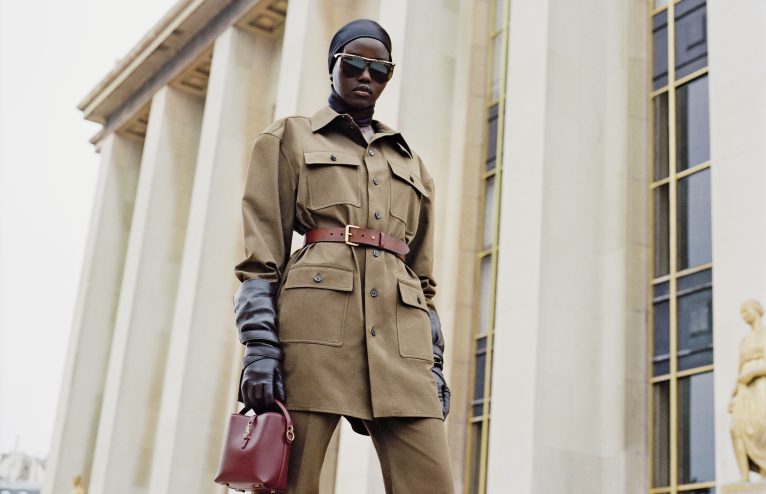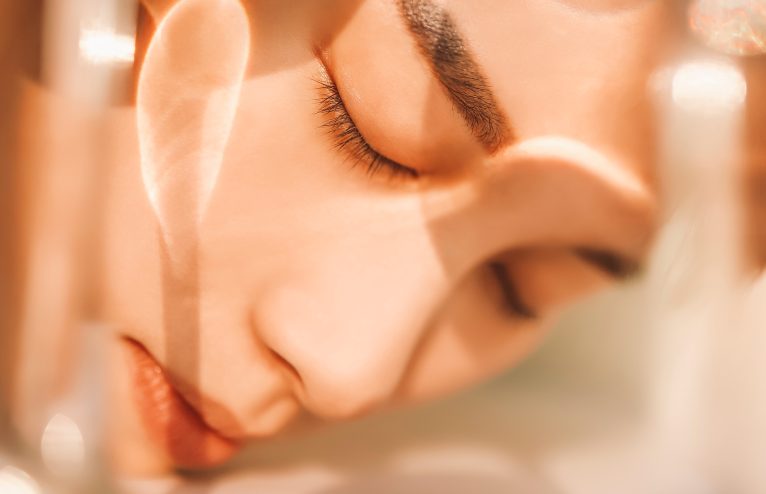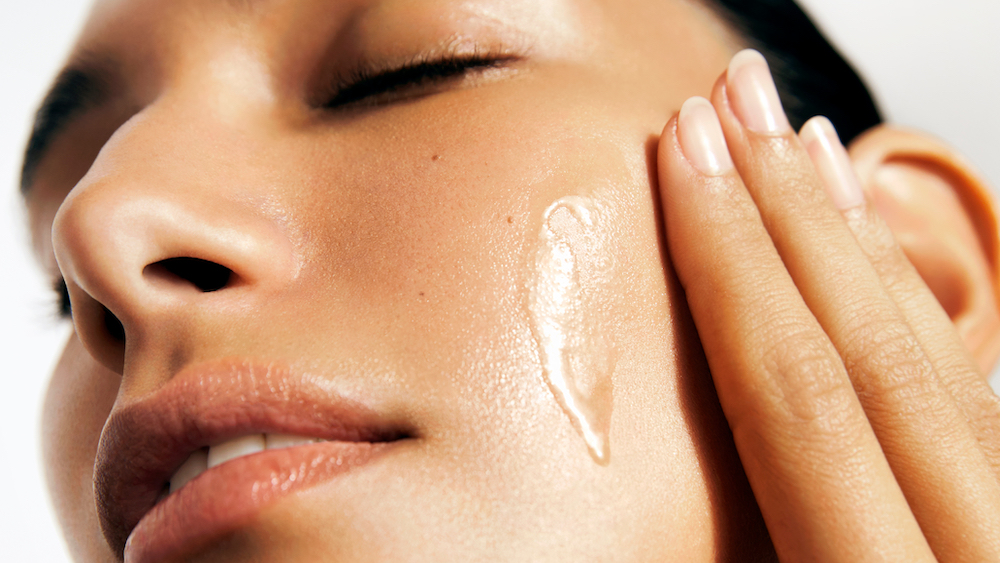The hashtag #cleanbeauty is fast approaching one billion views on Instagram but for Citizen Femme’s beauty editor, Becki Murray, it’s time to break up with the term.
What comes to mind when you hear the term ‘clean beauty’?
In addition to the Instagram hashtags, Statista predicts that the global natural and organic beauty market will reach $22 billion by 2024 – but the emotions we apply to the term depends which side of the beauty fence we’re on.
For me and many other experts, ‘clean beauty’ is a broad and ill-defined phrase; one that can be confusing and that comes with sweeping marketing campaigns, making it hard to find products that actually work.
Is it time to find an alternative to clean beauty: something that gives better results but still aligns with your beauty goals and lifestyle choices? Read on as we delve into the conversation.
What is clean beauty?
Clean beauty as a concept can be difficult to explain because it’s not legally defined or legislated (which in itself is a problem). As a buzzword, it tends to define products and brands who prescribe to the idea that there are certain ingredients that shouldn’t be included in beauty formulas. This is sometimes because they are deemed to be sensitising or otherwise detrimental to the skin, or due to suggestions they pose a broader safety or health risk. Some brands who identify as ‘clean’ may also claim they are ‘non-toxic’ or ‘chemical-free’, as well as advertising that they favour natural over synthetic formulas.
Commonly frowned upon ingredients include artificial colours, mineral oils, sulphates, phthalates (emulsifiers), silicones, essential oils, alcohols, parabens, and fragrances. Drunk Elephant’s ‘Suspicious Six’ – a guide to ingredients it avoids in formulas – is often referenced in this space, although ultimately brands tend to differ on what they will and won’t allow in their formulas.
View this post on Instagram
What are the positives of clean beauty?
Clean beauty has challenged the status quo of the beauty industry and it would be unfair to criticise every aspect of brands adopting a ‘clean beauty’ mantra.
The ‘clean beauty’ industry can be credited for encouraging some positive strides forward in product development, for example: the rise of effective alternatives to silicones in makeup and sulfates in haircare to meet demand, and the increasingly impressive array of results-driven skincare from plant-derived sources. After all, having the choice of alternatives is always good for pushing product development forward and these are innovations that may have been overlooked if we’d continued using traditional techniques.
Importantly, customers feeling empowered to challenge and question brands – especially the big corporations – about what’s in their products, should be celebrated. Done the right way, this can encourage more understanding of our beauty products, as well as creating greater choice for our routines.
What’s the problem with clean beauty?
‘Clean beauty’ acts as a broad defining term for products that avoid certain ingredients or formulation techniques. Instead of offering a true education, the clean beauty movement can, in many cases, be seen to actually encourage or amplify misinformation. This might be done accidentally, through generalisations, or, to profit from the ever-growing market.
This approach is often accompanied by a vast amount of fear-mongering, greenwashing and lack of evidence and so, for many customers, ‘clean beauty’ doesn’t in fact simplify the beauty product buying process, instead overwhelming and confusing them.
Many beauty science experts are therefore keen to encourage customers to move away from the term, here’s why:
1. Fear-mongering
A big problem with the concept of ‘clean beauty’ is that it tends to automatically imply that other products that don’t fit into its mold are ‘dirty’, which can be confusing at best and manipulative at worst.
It’s important to remember that by law, any beauty product sold through mainstream channels has to be thoroughly safety tested before it is allowed to be distributed in any country. That means that while brands may encourage the avoidance of ingredients for an array of reasons, any ingredient on the market does not have nearly enough evidence against it to be withdrawn from sale – otherwise its use would already be discontinued. As a result, what ‘clean beauty’ doesn’t make clear is that what they are doing is a formulating choice, not a necessity that other brands are callously overlooking.
What’s more, the concept of many “free from” claims are flawed and usually overly broad in their reach, which only encourages confusion. That includes “no-nasties” and “non-toxic”, which, due to the above, is unnecessary or perhaps sometimes deliberately used to encourage fear of competitor products.
“Chemical-free” is also misleading and frustrating as a term: everything in the world, not just our beauty products, is made from chemicals. That includes water and all the “natural” ingredients included in ‘clean beauty’ products. Marketing products as ‘free from’ in this way is either misleading (again) or worse still, demonstrates a lack of understanding of beauty science and formulation.
2. Misinformation
Unfortunately, where fear-mongering exists, confusion and misinformation is sure to follow. A recent Instagram post from a collaboration of leading cosmetic science and skin scientists perhaps puts it best. It read: “I want my skincare to be full of chemicals and without any “free from” claims, because I am a scientist and understand cosmetic formulations.”
The experts who collaborated on the post include Dr. Michelle Wong, who posts under @labmuffinbeautyscience, and Heleen Kibbelaar, aka @sciencemeetscosmetics; across their platforms they have amassed almost 510k Instagram followers. They are both committed to tackling clean beauty misinformation online.
View this post on Instagram
“With this post series and collaboration we try to stand up against the many marketing claims in the cosmetic industry which lead to misconceptions and create fear-mongering around powerful and important ingredients,” explained Kibbelaar. “The baseless fear-mongering is so insidious, especially when fear makes it more difficult to think critically!” agreed Dr. Wong.
“More specifically, ‘free from’ implies that the ingredients the products are free from must be bad, that these ingredients are unsafe and that products with these ingredients should be avoided,” outlined Kibbelaar. “The problem is not necessarily that a brand chooses not to use these ingredients, the problem is that they give a bad reputation and create fear-mongering around these ingredients. Ingredients such as sulphates, parabens and silicones are one of the most studied and powerful cosmetic ingredients and will easily result in effective and safe cosmetic products. That’s why so many brands formulate with them.”
Arguably, more research into beauty ingredients should always be encouraged to ensure our products are safe. But, it’s testament to the power of fear-based marketing that despite most formulators not believing such ingredients should be feared, most brands do now avoid them, as misinformation has become rife enough that it makes good business sense to do so.
Parabens are a particularly good example. Despite being well-proven to effectively prevent mould and bacteria growing inside products (which is integral for efficacy and safety), these synthetic preservatives have been marred by suggestions they are dangerous to health.
A now infamous study (1998) suggested a link between parabens and hormone disruption, and another found parabens in breast tumours, but the broader context of this research has been lost due to a misunderstanding of the scientific method. In particular, the research did not establish a link between parabens causing breast cancer – the American Cancer Society itself suggests there is insufficient evidence – while the hormone disruption study was performed by injecting rats, which cannot be equated to applying parabens (in very small quantities) topically to human skin. These facts are underreported in the beauty industry – with fear still ruling the headlines – leading to an almost industry-wide reduction in their use.
3. Greenwashing
‘Greenwashing’ is when sustainability claims are made but ultimately cannot be supported and is a term that is increasingly synonymous with the clean beauty industry. Perhaps not surprising considering that in an increasingly saturated market, brands seek to make bigger and better claims to standout and appear ‘cleaner’ than others.
Terms such as ‘sustainable’, ‘clean’ and ‘natural’ are not regulated, meaning a brand doesn’t have to meet a certain threshold to use them in their products. Even ‘organic’, which has the most air of authority behind it, can currently be used if only 1% of ingredients are from an organic origin (unless they are organically certified). As a result, a product claiming to be ‘clean’ only has to align with its brand’s own interpretation of that word, leading to vast differences between so-called clean brands – and even more confusion for customers.
Moreover, when it comes to the natural versus synthetic debate, there is an inaccurate underlying assumption that ‘natural’ must be better. As Kibbelaar explains: “the source of the ingredient doesn’t tell you much about its safety, sustainability and efficacy. Naturally sourced ingredients can, for example, be very irritating to the skin. While for (bio)synthetic ingredients, safety substantiation is much easier.”
That’s because while, by their very definition, natural ingredients are used as they exist in nature – and you wouldn’t want to use stinging nettles straight onto your skin – synthetic alternatives are designed to avoid sensitivities. Plus, you can still experience a skin reaction to any ingredient – deemed to be clean or otherwise – due to our skin’s role as a barrier and sensory organ.
Simultaneously, from a sustainability viewpoint, while natural products are often sought out by environmentalists, “both natural and synthetic sourced ingredients can be polluting for the planet,” explains Kibbelaar. “It is important [regardless of the type] to fully understand the impact of it on the planet and manage them responsibly.”
Take for example, the increased demand for certain natural ingredients such as avocado and liquorice, where ecosystems are being disrupted via over-farming, and land is having to be taken over to produce more and more of these ingredients to meet demand. Then, when the trend for an ingredient dies down, the ecosystem has to change again as part of an unsustainable cycle.
It can also take vastly more resources in terms of water, land and production costs to produce the necessary amount of a natural ingredient compared to synthetics. For example, it can require thousands of flower petals to produce one millilitre of fragrance oil, whereas new innovations allow the same scent to be produced in a lab without even needing to pick the flower in question.
In reality, often it’s sustainable farming and production methods that make a brand ‘cleaner’ rather than just the perception of natural ingredients or the avoidance of others. If sustainability is important to you, it’s better to look for true certifications, such as Leaping Bunny or the Soil Association logos, instead of vague ‘clean’ or ‘green’ claims. It’s true that seeking certification can be expensive for brands – a cost that is frequently reflected in product pricing and thus passed onto the customer – but if you want to build a more sustainable routine, you’ll benefit from seeking out brands who are happy to have open conversations (both with regulators and customers).
4. A Missed Opportunity
Finally, in some respects, clean beauty’s approach of focusing just on the ingredients that aren’t included in their formulas is actually doing themselves an injustice. Brands are ultimately trying to get customers to invest in a product by promising them what isn’t in the box, rather than highlighting the results-driven ingredients that it might have. This does some really effective formulas a disservice.
Let’s consider “sulfate-free” shampoos, for example. Sulfates are a really effective and safe ingredient for removing dirt and oil from your hair, which is why they have been used in shampoos for generations. They are, however, so good at this oil-removing action, that they can be stripping if you have a dry scalp or coloured hair. Therefore, sulfate-free shampoos can be a really good option for some hair types and not for others. If brands were more open to marketing a product based on what it can do, rather than vilifying an ingredient it has left out, customers would be better able to find products that suit their individual needs. Sulfates are, after all, still a really effective way of cleaning oily hair and for anyone who loves a good bubbly lather.
What comes after clean beauty?
My advice? Instead of buying in to products that are ‘clean’ (or ‘unclean’), focus instead on your own individual skin and lifestyle concerns. That may mean rejecting some products for not meeting your standards – for example if they’re not vegan or certified organic – but make sure your decision is lead by concrete ideals, rather than broad-sweeping fears about an ingredient or brand.
Always take a moment to think before a glitzy marketing campaign or social media video motivates you towards (or away from) a purchase. If you’re unsure, look for brands that encourage education not fear. The Inkey List, Skingredients and Sam Farmer, for example, are very open about skin science.
Another guide is to reach out to a brand on social media, in store, or on their website, if you have questions. Then, navigate towards the brands that are open to your query and reply without pushing you to buy a full routine of products; those that avoid your questions or revert to scaremongering are unlikely to be worth your time or money.
Importantly, for some people, skin sensitivities will mean some ingredients or products aren’t suitable. Essential oils and fragrances, while offering benefits and a great smell, can be common allergens in skincare so if you have sensitive skin, you may need to avoid them.
However, there’s also no need (and in fact its counterproductive) to ban ingredients completely. The best way to know whether a product will be okay for your skin is not a ‘clean label’. It’s to always patch test new products – even if you don’t think you have sensitivities. That means applying a small amount, normally behind your ear so you don’t rub it off accidentally, and leaving it on your skin for as long as possible to make sure you don’t have a reaction.
The final word
Being ingredient and product aware can keep you feeling in control of your beauty routine, but there’s no need to seek out ‘clean beauty’ exclusively in order to do so. Most importantly, you should strive to enjoy the products you use (rather than constantly worrying about their ‘clean rating’). To make that a little easier if you are searching for a vegan routine or products for sensitive skin, the below categories may help you find brands that can work for you:
Our favourite organic beauty products
Our Favourite Vegan Beauty Products
Our favourite beauty products for sensitive skin
We may earn a commission if you buy something from any affiliate links on our site.


























Any Questions or Tips to add?